What You Need In Your 72-Hour Kits Today
I wrote this post several years ago to help people learn what to put in 72-hour kits. Today, I want to explain why we may all need cash and a few other items. I am talking about small bills, like ones, fives, tens, and twenty-dollar bills. If we were to lose power, some ATM access cards might not work because the banks may also have lost their power. I’m updating this article from 2018; it’s a great reminder to be prepared for the unexpected.
This means we may not have access to the money we all have in the bank, credit union, or stock market. Remember that gas stations can’t pump gas when the power goes out. Our local grocery stores may not accept debit or credit cards—only cash—if their online systems are down.
Real cash….they also may not be able to give “change.” For instance, you might have one twenty-dollar bill in your wallet, and the water you want to buy is $10.00. They might not be able to give you any change because they no longer have any small bills.
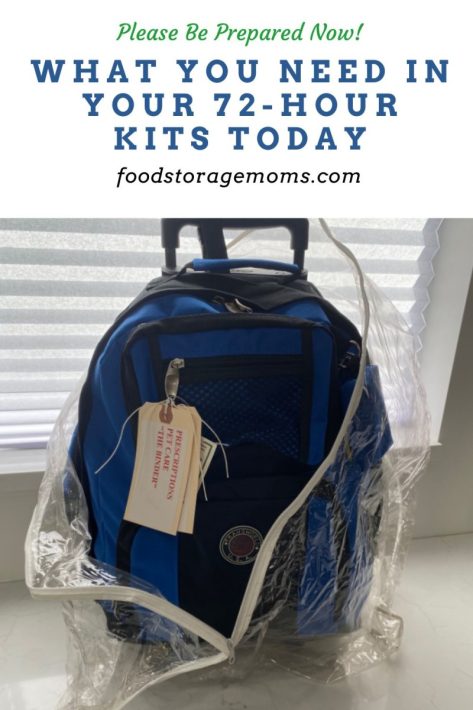
Here are some of my 72-hour kit/bug-out bag lists to get you started. I wrote these about ten years ago, but I hope these will help someone put together a 72-hour kit, bug-out bag, or even a box with emergency items. We can’t depend on the government to take care of us.
If we have a major disaster, the bank that receives your paychecks, retirement checks, disability payments, or whatever form of income you receive every week or month, might suddenly stop receiving them or limit access to the funds. Yes, it may stop if we have a complete or partial grid down. This means you may be without power for a few days or maybe even a few weeks. Hopefully, not months, but none of us knows for sure.
We could have a pandemic, and you might not want to leave your house so you plan to shelter in place. I hope this doesn’t happen, but many years ago, I had two family members contract polio. It wasn’t a pandemic back then….but we were not without fear of catching the deadly disease. Of course, in 2020, we did have a pandemic.
Look around your house and evaluate whatever you have that can get you through the emergency situation. It may be what you’ll need to survive until things return to a more normal state. If you have planned ahead, those 72-hour kits and other stored items may be the only water, food, and other essentials you can depend on for days, weeks, or months.
If the situation warrants it, you’ll need a 72-hour kit or bug-out bag to take with you when you leave your house. We must be prepared for the unexpected, whatever comes our way. I’m not a doomsday prepper, but I am a prepper. I am preparing for the unexpected, and I hope you are also preparing. No one will take care of you and your family but you. So, let’s get started with a few ideas for preparedness.
Red Kit Has Different Items Than the Blue One – A Kit for Me
I typed up a sheet for each bag to know what each contained. I keep the cardstock sheet under a protective plastic cover.
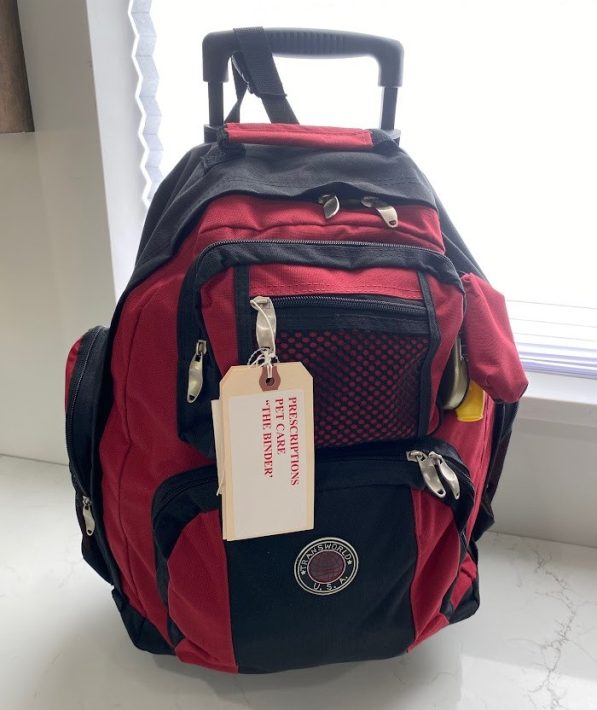
Blue Kit has Different Items Than the Red One – A Kit for Mark
I typed up a sheet for each bag to know what each contained. I keep the cardstock sheet under a protective plastic cover.
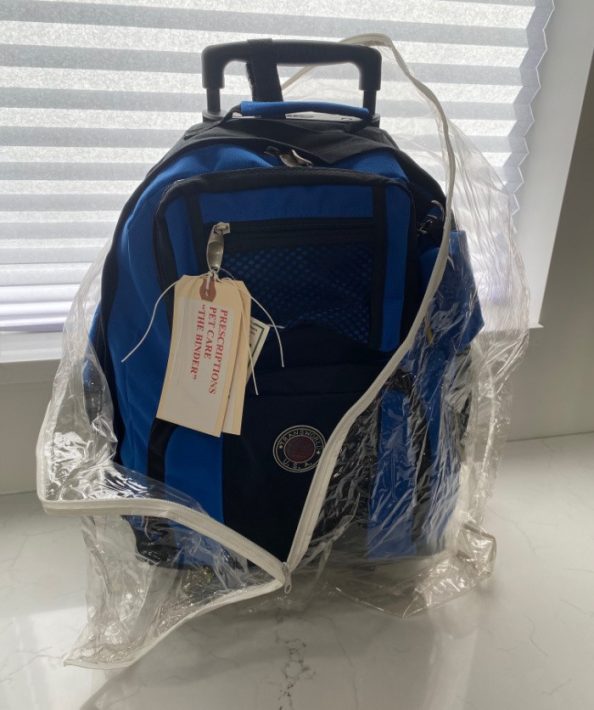
72 Hour Kits For Adults:
Adults (printable)
Every emergency agency in the country recommends having a 72-hour kit available to grab and go in an emergency. Be sure to update your kit every six months to a year, depending on its items. Include the food you know you will eat and items that keep you busy during inactivity. Be mindful of storing items that might leak, melt, or affect other items in your bag if they leak or break open (Ziploc bags might help with this problem).
Attach a tag to the kit or bag with your name and phone number (s), a tag to remind you to grab your prescriptions/medicines, and a tag to grab your emergency document binder with things like insurance policies. Depending on the needs of you and your family, items you could consider including in your kit are:
Food to last for at least three days: MREs (Meals ready to eat); hot and cold ready-to-eat food packages; freeze-dried fruits and vegetables; candy, gum, jerky, fruit snacks, raisins, fruit leather, granola bars, peanuts, crackers, etc
Aspirin, Aleve, Ibuprofen, Vitamin C, cold remedies, essential oils, etc., and antacids (for upset stomachs). Don’t forget Tylenol PM or something similar to use as a sleeping aid.
- Ax/shovel combo
- Baggies (all sizes)
- Batteries (all sizes-rotate yearly)
- Bible/Scriptures
- Bee sting & bite kit
- Blanket–solar is thinner
- Pillow
- Bleach (household chlorine–nonscented)
- Books
- Bung wrench/Gas shut off wrench
- Small bills/coins (if we lose power, ATMs won’t work; credit/debit cards won’t work)
- Can opener (manual / non-electric)
- Canned stove
- Candles/glow sticks
- Cards or small games to play
- Chapstick/lip balm
- Chargers in case we have electricity but still need to evacuate
- Coats/Jackets/Sweaters/Extra Clothes & Shoes – Complete change of clothing, including socks
- Coffee Pot, pitcher, container
- Cooking pot, grill, or fry pan
- A cooking stove of some kind/fuel/fire starter/striker
- Compass
- Contact lenses & supplies
- Cotton Swabs/Kleenex Tissues
- Disinfectant
- Duct tape
- Emergency sewing kit
- Faminine hygiene items
- Fingernail clippers/nail file
- Fire extinguisher
- First Aid Kit
- Hand Warmers
- Flashlights (preferably solar or crank); don’t forget batteries (store batteries outside the flashlights to keep them fresh)
- Garbage Bags
- Glasses (extra pair of eyeglasses)
- Gloves/latex or non-latex
- Hair brushes/combs
- Hats, gloves/scarves
- Headlamp
- Hearing Aid, plus batteries
- Imodium/Anti-Diarrhea medicine
- Instant milk (chocolate would be good as well)
- Ipecac (check with poison control if possible)
- Hot pads, dish towels/rags/dish soap
- Local maps
- Lanterns/compact light
- Masks N-95 minimum
- Matches (waterproofed)
- Mess Kits
- Mirror
- Moist towelettes
- Scissors
- All Purpose Knife
- Mosquito Spray
- Personal Hygiene (tampons, pads, feminine supplies, etc.)
- Post Notes/pencils/pens/crayons
- Radio/hand crank and or battery type (pack batteries)
- Rain Poncho
- Rope
- Safety pins, several sizes
- Shaving cream, shavers (disposable)
- Solar lights
- Sunglasses
- Tarp – shelter
- Temporary toilet and bags
- Thermal Underwear
- Thermometer
- Toilet Paper, shampoo, hand soap, baby wipes, hand sanitizer, deodorant, toothbrushes, toothpaste, tweezers
- Tools
- Tent(s)
- Umbrella
- Utensils, plates, cups, and silverware to cook and eat with
- Vaseline
- Wet wipes-lots…they might be our only shower
- Whistle, Walkie-Talkies (test before you need them for distance)
- NOAA Weather Radio
- Work Gloves
- Remember, you would need a truck to “haul” all of these items, so check off one item at a time and pick the items that meet your and your family’s needs. These are IDEAS…. start collecting a little at a time.
- Put all the things that need to be rotated together in baggies. This way, you can grab a bag and switch out the outdated items.
72 Hour kits For Children:
Children (printable)
Children need a 72-hour kit to meet their dietary needs, hygiene, and comfort items to keep them occupied during long periods during emergencies. When preparing a backpack or bag for them, attach a tag to the kit with the child’s name. If your child takes particular medications or prescriptions, also add a tag as a reminder to grab those medicines. Items that could be included in the kit are (be sure to rotate perishable items yearly):
- Family picture(s) with names and phone numbers/email addresses (in case they get separated from you or if you have a child who can’t verbalize who they are)
- Water (enough for three days)
- Food that is age-appropriate or that your child will eat: MREs (Meals Ready To Eat—add water), food that is ready to eat without water, freeze-dried veggies, freeze-dried fruit, freeze-dried yogurt bites, snacks, graham crackers, peanut butter crackers, cereal, raisins, fruit leather, fruit snacks, and infant formula if needed.
- Candy (such as suckers)
- Juice boxes
- Cup, plate, bowl & silverware/child mess kit
- Reading books
- Colored pencils/non-electric pencil sharpener or markers, crayons (not for car or garage-they’d melt)
- Paper, tablets, coloring books
- Puzzles, games, small activities and Play Dough
- Medications: Motrin/Tylenol, Cough syrup (rotate yearly)
- Any medication you use occasionally: antibiotic ointment, Vaseline, saline spray, etc.
- Baby wipes/diapers/formula/baby food/baby food grinder/pacifiers
- Solar or small blankets
- Small pillow
- Hand sanitizer
- First Aid Kit (child-size Band-Aids)
- Extra clothes/jacket/sweater (sweat suits are ideal for storage because you can cut the sleeves and legs off if the weather is too warm or wear them as is in cold weather)
- Child size N-95 masks–practice with these BEFORE you need to use them
- Bible/Scriptures, etc.
72 Hour Kits For Pets:
Pets (printable)
Don’t forget to prepare for your animals! They’ll be hungry, thirsty, and upset with a sudden change of environment, so make sure you have what’s necessary to keep them comfortable in an emergency. If you’ve got animals, reptiles, or other pets that aren’t dogs and cats, you’ll need to consider their needs when planning a 72-hour kit. For dogs and cat needs, consider adding these items to a backpack or other container:
- Water/food dish
- Photo of the dog (to be circulated in case they get separated from you)
- Complete medical records
- Chip ID information
- Leash/harness/collar
- Sweater
- Toys
- Blanket
- Brush/comb
- Cat or Dog food (enough for at least three days)
- Water (enough for at least three days)
- Pet First Aid Book
- Vet wrap 2″ and 4″/trauma pad
- Gauze bandage rolls (2″, 4″, and 6″)
- Adhesive tape
- Tweezers/scissors/surgical soap
- Thermometer/mineral oil
- Disinfectant solution
- Styptic powder/cornstarch
- Benadryl/triple antibiotic ointment
- Eyewash
- Saline
- Medication, 5-day supply
- Tick-Flea Meds
- Paper towels/plastic bags/ziplock bags
- Dog and cat carrier(s)
- Cat litter box/litter
****Remember, the Red Cross will NOT accept our pets; they only allow service animals to assist people at the Red Cross Centers.
72 Hour Kits For Vehicles:
Vehicles. (printable)
Emergencies or disasters/events can strike at any time, so having certain items in your vehicle can be lifesaving. Place items in a backpack, gym bag, or another container. Be careful about storing items that may be damaged or compromised in extreme heat situations. Items to consider adding:
- Names and phone numbers of who to contact in an emergency
- Battery/crank-powered portable radio/extra batteries
- Flashlight/preferably one with solar/crank/LED
- Compass and maps: not everyone has GPS in the car and on phones
- Can of motor oil
- Fire Extinguisher(5 pound ABC type)
- Flares and orange cones
- Jumper cables
- Rags/paper towels
- Shovel
- Pocketknife
- Tire gauge
- Toolbox
- Window scraper for ice
- Tow Rope
- Bungee cords
- Duct tape
- Waterproof matches
Necessities for survival:
- Water
- Warm Blankets
- Jackets/sweaters
- Emergency cash: approximately $100.00 in small bills
- First Aid Kit
- Baby Wipes
- Hand Sanitizer
- Scissors/pens/pencils (not crayons-they melt)
- Emergency snack food and MRE meals (items may need to be replaced more frequently if stored in extreme heat conditions)
- Whistles
- Umbrella
- Hand warmers
- Extra blankets
72 Hour Kits For Business:
Business. (printable)
You may not be home during an emergency/event, so having emergency items at your business would be helpful and possibly life-saving. Helpful ideas or items to secure your office:
- A drawing or plan of your building/office–highlight with “red” all EXITS.
- Employer/Employee/Patient list with names and family contacts/numbers.
- Local emergency numbers are available at each desk/cubicle.
- Use fastening straps, adhesive fasteners, or other securing devices to make earthquake-ready pictures, furniture, water heaters, computers, etc.
- Remember, cell phone texts might go through when phone lines aren’t working.
- Have an emergency power source generator available, like Goal Zero units.
- Power-failure lights (battery operated) that will turn on and help during an evacuation of your building.
- Walkie Talkies such as Motorola Talkabout located in various places. Some professional walkie-talkies
require licenses. Check your local area. - Find out who has a HAM radio license or at least a scanner. You can hear what’s happening in the world without power, radio, or television.
- Do training for evacuation plans, etc. Practice different scenarios for disasters and emergencies. Be ready for any unexpected situation.
- Know where to turn off the gas (only turn it off if you smell gas) and make sure you have the right tool handy.
- Find where to turn off electric power. Flipping the switches at the circuit breaker panel DOES NOT turn off the power. Find where the MAIN switch is to turn it off.
- Know where to turn off the main water line. You might need a water key.
- BEFORE an emergency, find out where all the emergency shut-off switches are located. Post a cheat sheet with this information in several locations throughout your building or office.
- Related: Tips for Emergency Preparedness for Those with a Disability
Emergency List of items to have on hand:
- Water containers and purification drops (I prefer Water Preserver product to treat water storage). Rotate water every five years. One gallon of water is needed per person per day. Heat or high temperatures would warrant more water per day per person. Have a plan with additional water that can be carried quickly should you need to leave your building. My suggestion is four gallons of water per person per day to cover hydration, cooking, personal hygiene, and minimal laundry tasks.
- For large water containers (like water barrels), ensure you have the necessary item(s) to open them.
- Food: Decide how many people are typically in each building and how many calories per day per person.
Plan on MREs and/or other non-perishable foods or cold instant food types (a combination is best.) - Cooking: Two separate sources are best: propane, coal, or wood. I prefer Camp Chef (uses only propane). I would recommend MREs or similar that only require heated water for large groups. It would be hard to “cook” every meal. A Volcano II stove with extra propane hoses would be a great addition. Volcano II uses wood, coal, and propane, depending on the model. This way, you could have some way to boil water for large groups.
- Adequate paper products, plates, cups, silverware/serving
- Fuel: I like Ozark Oak Lump charcoal. It lasts indefinitely if kept in airtight containers; use Gamma lids on 6-gallon buckets to make them easier to open. The Ozark Oak Lump charcoal has no chemicals like regular charcoal. You can store and forget until needed; storing it is safer than propane.
- Firestarter/matches/emergency candles
- Personal Hygiene, package toilet chemicals, snap-on toilet seat, toilet paper, women’s hygiene products, hand sanitizer, gloves latex/non-latex
- Portable toilet with bags
- First Aid Kits for each building/office. Osha recommended kit-25 person Emergency Ready First-aid Kit
- 3M/N-95 masks for everyone – also consider dust maks
- Plastic sheeting & duct tape/body bags
- Aspirin, Aleve, Ibuprofen, Imodium (anti-diarrhea), Vitamin C.
- Biohazard Bags
- Emergency Blankets
- Safety Whistles
- Shake Lights
- Flashlights/solar/crank and battery ones. (Batteries stored separately)
- Keep lots of batteries (all sizes-rotate)
- Radios/Weather Radios with Hand Crank
- Phone Chargers (multi-use/size): you might be unable to leave your building. You can buy multi-charge units
- Crowbar, two by fours for cribbing
- 4-in-1 survival tool
- Fire escape ladder if you have more than a single-level building
- Rope
- 12 function knives
- Insect Repellant
- Shampoo, shaving cream, shavers, toothpaste, toothbrushes, towels, wash rags, dish towels, kitchen soap
- Work gloves
Final Word
I hope most people have food, water, and batteries for at least 72 hours. I hope we all have at least two weeks’ worth of those items. Let’s all look around our homes and ask ourselves, “Could I survive for 72 hours, one week, maybe even two weeks with the cash, food, and water in the house starting today?” Is my gas tank empty, quarter full, or half full, or do I have a full tank today in case I need to evacuate? May God Bless this world, Linda



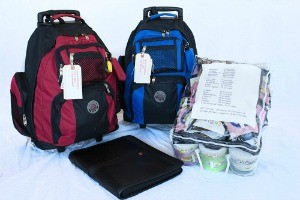
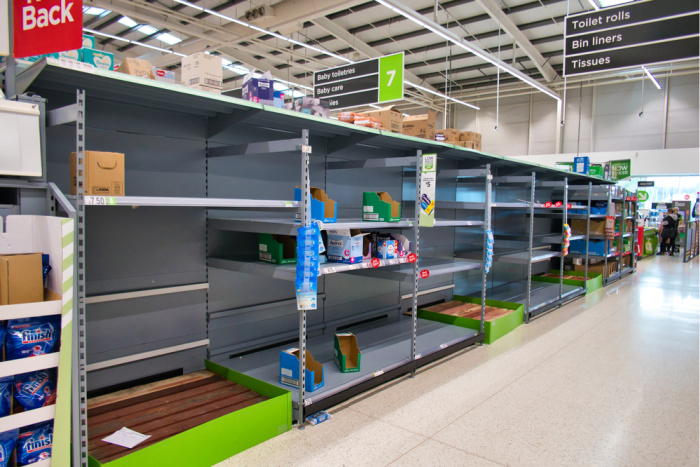
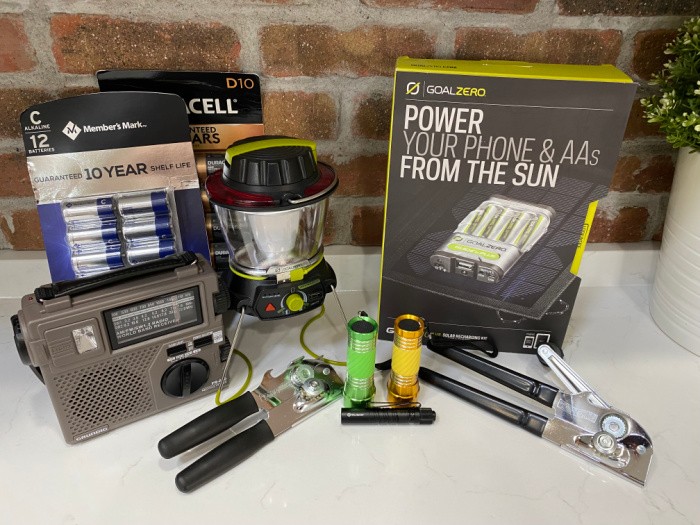
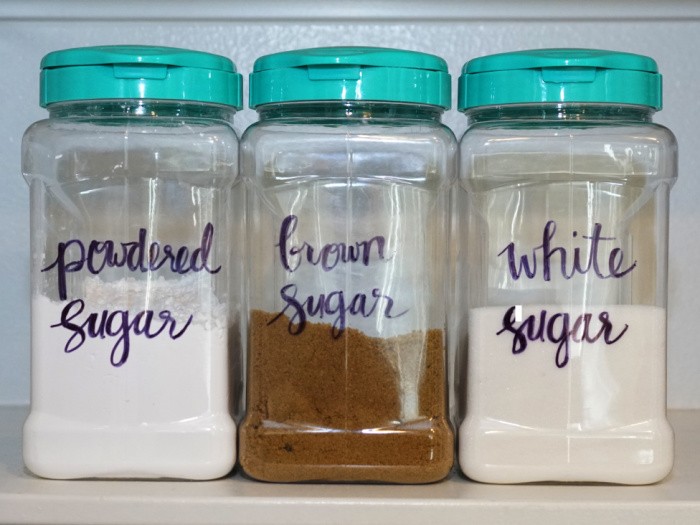
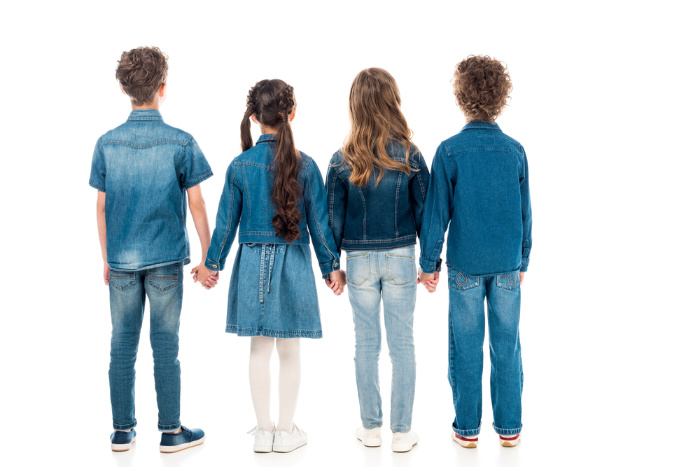


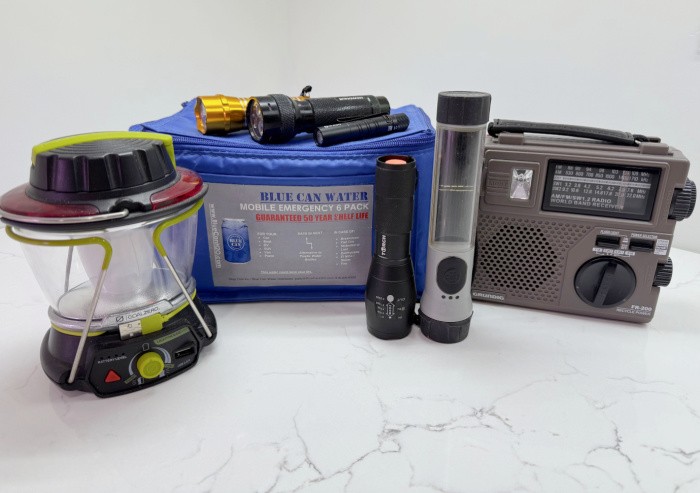
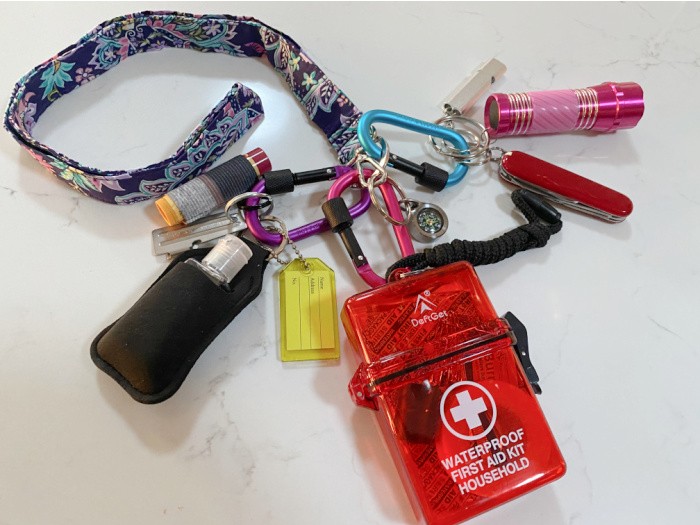










Having attended a couple of local “prepping” events, I have learned that 72 hour bags, while great and should be on hand, are not enough. What I heard from the Red Cross people, local fire department and police is that in an event such as an evacuation due to a large scale disaster, we will need to have at least 2 weeks worth of food/water and other necessities to survive on our own. Of course, this also necessitates having more than one “bug out bag” and will be unwieldy. At this time, I have a back pack, a rolling suitcase and a duffel bag that would go with me.
The backpack has first aid, safety items, water (boxes), and a bit of food; the rolling suitcase (not a large one) contains clothing, important papers, water (boxes) and a bit of food; the duffel bag contains water (boxes), personal safety (gun, ammo, more first aid), and food. The way I figure to bug out is to place the duffel bag on the rolling suitcase and the backpack on my back. These 3 bags are my immediate response to getting out. If I have time to evacuate, I have other items that will be taken: a bin with cooking, heating and warmth, more food and more water.
One of the things that I am finding where I live is that my neighbors believe that the local governing body will be able to take care of them immediately. I think that they will have a rude awakening when/if something happens in my area. Shoot, they are not even prepared to survive a minor (3-4 day) power outage! How they will survive a power outage without their coffee in the morning is beyond me. Some of my neighbors tell me that they are just coming to my apartment! I tell them to bring all non-perishable foods, blankets, pillows, and LOTS of money in small bills! They ask me about the money – I tell them that they are not going to use my resources without me being compensated!
Hi Leanne, oh I love the bring small bills comment!! LOL! I have several bags as well. One bag is not going to cut it. It’s crazy, I have at least one or two church leaders (different faiths) ask me every month how to light the fire under their church members to get with the preparedness plan. It’s sad because I feel as you do, that maybe they think the government will deliver food and water after a disaster. Good luck with that one. It’s not going to happen. You and I will be comfy sipping hot chocolate! Linda
As for lighting a fire under anyone, that is something that we can try and perhaps have a bit of success. Those who do not heed the message will be in dire straits! Tell the church leaders (and any other believers) to study the scriptures. There are numerous verses in the Bible that talk about storing up for emergencies:
Genesis 41:34-36 ESV
Proverbs 6:6-8 ESV
2 Corinthians 9:6 ESV
Ezekiel 38:7
Luke 12:19
Just a few that I have run across. Of course, there are plenty of verses that indicate that the Lord will provide and I truly believe that but…Perhaps the Lord provides in the form of knowledge and forethought as well!
Hi Leanne, I totally agree. Hopefully, some people will heed the warnings from others. May God bless this world, we will need it. Linda
I believe we need everything necessary to start over again. Chances are, if we have to evacuate we will probably not have our intact home to come back to. I think it is better to assume we will not be able to access anything in our dwelling again…..I know often this has been the case for so many survivors of disasters I have interviewed. These lists are a great start though…
Hi Kathleen, I lived through a tornado and severe flooding. Some houses were damaged, ours were not. I realize that some may not have a home to come home too. In both of my situations, we never left our home. The one thing I worry about where I live now is earthquakes. Hopefully, someone in our neighborhood will be prepared to help others until their life gets back together. Linda
Kathleen ~ This is so true. And just look at the damages wreaked by the earthquakes in/around Anchorage Alaska today. It may be some time before those stranded on the highway can even get out of the situation they are in and try to get home to see what they are faced with now. I only hope and pray that they had some emergency preps in their cars.
They will come to your place and you’ll need a plan for those who have less than honorable intentions.
You’ll need LTL (less than lethal) and lethal options. I say LTL because if ROL(rule of law) returns in a short time it might not go in your favor if you went full “purge movie” on everyone.
Again, thank you for your lists and efforts to get folks motivated, Linda. And I love Leann’s comments! I will have to remember the comeback about being compensated for your supplies!
Prayers for all affected by the quake in Anchorage today. Hopefully living in a harsher climate has taught residents to be more prepared.
Here in NW Florida, October 10th’s Hurricane Michael was a huge wakeup call for a large portion of our population. It came ashore as a confirmed Cat 5, with sustained winds over 160 mph. Very few buildings were able to withstand the effects of winds that strong, to say nothing of the tornadoes contained within different parts of the hurricane. Those close to water at the landfall also faced humongous storm surge.
The swath of mass destruction extends several hundred miles across the Florida Panhandle and is over 50 miles wide. It was still a major Cat 3 hurricane as it crossed eastern Alabama, 300 + miles from where Michael came ashore in Mexico Beach and Panama City.
We were on the very fringes of the western edge of the storm, so minor damages/disruption in our area. The destruction begins about 60 miles to our south and east.
We have been actively collecting supplies every week to help many of the smaller communities that were devastated. Our church has been boots on the ground in Panama City from Day 2 after the storm passed. There have been hundreds of volunteers from churches across our area helping to clean up, volunteer crews that are operating chainsaws to cut the millions of trees off buildings, clearing roads and driveways.
Less than 3 weeks after the storm, over 7000 linesmen had rebuilt the electric system in all of Florida Panhandle. In Bay County alone that meant over 6000 individual power poles replaced, thousands of transformers, hundreds of miles of wire replaced.
We are almost two months into recovery right now. Power has been restored to all buildings that are capable of having electric service restored. More homes are getting power back each day as the electricians and inspectors do their jobs. Water service has been restored to all communities. Some stores in the hardest hit areas are open again. Gas is still difficult to find. Those who lost their homes may be in hotels 2-3 hours away.
Schools are operating on split schedules, with middle school students attending classes for the morning, then high school students attend the afternoon classes. Schools are sharing buildings, teachers and supplies to try and bring a sense of normalcy to their students.
An aerial video would show a sea of blue tarped roofs, huge piles of debris along roads, tons of Rvs, tents or other makeshift shelters as people try to rebuild and or salvage what they can. It will be a long time before our state recovers from this storm.
OH, BDN, thank you for this information. So many of us many miles away cannot comprehend the devastation you have gone through. We can see some of it on the TV but then we never hear about the updates of the recovery. I hope this is okay, I’m going to share this on my Food Storage Moms Facebook. I’m reading this and I have goosebumps or chills and a lump in my throat. I’m so sorry this has happened to you and all the families and workers around you. Thank you for sharing this. The world needs to see this. I thank you from the bottom of my heart. Hugs, Linda
Linda, our county (Escambia & Santa Rosa ) had very little damage from Hurricane Michael. I think everyone in our area is well aware that the devastation affecting our friends and neighbors to the south could so easily have been our reality if Michael had not turned, as he was aimed directly at us. I am sure that many of us want to help our hurting neighbors in Marianna, Blountstown, Lynn Haven, Panama City and Mexico Beach because of that realisation.
Also, our area did take a direct hit from Hurricane Ivan in 2004, so we know firsthand about making do, about living with the reality that life is now totally different. I think the area that Michael hit had not experienced a landfalling major hurricane in over 50 years.
It’s a very important way for our area to pass on the goodwill this area received from all those who helped us after Ivan. It’s been a way to share our knowledge and the lessons we learned from Ivan with those devastated by Michael. We can give hope that they, too, can make it through this huge overwhelming challenge.
It’s also made people here look at what it would take to survive the devastation of a landfalling Cat 4 or 5 hurricane. Right now, many of our friends in this county are re evaluating whether they would stay or leave if a storm of similar strength were barreling our way. They are evaluating their supplies, their preparations, their plans, their storm protection. I pray we never have to put these to the test, but am well aware next year’s hurricane season is only 7 months away.
God bless you and your readers. Remember, God put each of us here exactly in this time for a reason. For such a time as this, we are here… Keep spreading the word about being prepared for the unexpected!
Oh BDN, I so appreciate your comments for the world to see. We must keep prepping. Utah should have an earthquake sometime, of course, we will never know when. I can prepare for most everything, but an earthquake, that’s a different duck, so to speak. I have faith I can live through anything and help others. I believe God knew I would carry the torch and do the very best I could to teach people a commonsense approach. Not a doomsday, life is good, keep on prepping, my friend. Linda
My sister in law ( my brother passed away 3 years ago January) and her grand daughter survived the earthquakes in Anchorage this week. I convinced her to start prepping about 3 years ago. Her home suffered some minor damage, mostly broken water pipes. She has enough backup water and food to keep them going until she can get someone out to repair the pipes. And while most of Anchorage was without power, she did not lose power. But, if she had, she also has portable heaters and a way to cook. My brother who lives in Talkeetna,125 miles away,did not have any damage other that items shaken of the shelves and walls, is also prepared. He has a well on his property, but the water has turned black and is not drinkable. He has water storage as well. I sent him personal water filters a few yrs ago. He has not yet used them to my knowledge,but we are not sure they would filter enough of whatever has turned the water black. My mom, who used to live up there says, the water filters would not work after an earthquake as the ones she had didn’t clear the water. ( but I believe she was talking about the ones she had on her faucet). You never know what emergency will occur, so I urge people to get prepared for anything.
Hi Judy, oh I’m glad your sister-in-law is okay. Hopefully, she will have those water pipes fixed quickly. It makes you wonder what is making the water in your brothers well black. That’s really sad because that may be the only water they have access to in the future. I’m with you we must be prepared for anything. Keep prepping, Linda
Hi Judy, regarding the black water in the well. Read something a while ago. Sprinkling a tablespoon of alum in a 5 gal pail full of murky water, then stirring it in very well, let set for a couple of hours. The alum causes the impurities in the water to combine together and sink to the bottom. Then the top 80-90% can be carefully removed and then run thru a filter to remove pathogens. I have NOT tried it myself yet. I do have very rusty well water and bought alum to try and see if it would settle the rust out.
Hi Alan, interesting let’s see if someone has tried this, thank you, Linda
Kits and bags can grow and shrink with changes in climate, political climate, area safety and other factors.
Summer needs more water and shade/cover/skin care
Winter needs warmth like clothing or hand warmers and more lights as it gets darker quickly and higher carb foods
Danger might require more weapons or ammo or lighter bags to run with
Fire might require extinguishers or lighter bags to run with
Hi Matt, you are so right! I love it when you comment because you have lived all of these over the years! I call this my forum becuase we all add to my lists. Thank you, Matt! Linda
Linda,
Excellent timing for this article. It is so well done. As you know, I’ve lived off the grid 6-9 months for 22 years- until we aged out 2 years ago. We live on a barrier island in a hurricane zone. I’ve been IN 3 cat 5s and about 10 others.
Started enhancing my pantry (prepping) during covid.
Your list is really good. The only addition I would make is, if someone doesn’t have solar panels (we have them on the camper only) is to get one of those folding solar panels (60watts will do…100 is better) and buy a supply of eneloop rechargeable batteries. I believe they are the best. I also have a charger that works off USB or 110. That way I can charge off any source. I only get AA and AAA. I bought “sleeves” that allow those batteries to be converted to C or D. Fewer things to look after. That solar panel will also charge all the other chargeables a person might have.
As to big chargers- gas, solar, propane…personal choice and circumstances. I never like the idea of a whole house generator powered by a propane tank. In a big grid down situation, there is no way to get it refilled. Gasoline is likely to be more available. Or- we have propane for the camper…stove and refrigerator/freezer. Will last a month on one bottle. One does not live off the grid as one does with shore power. People don’t seem to understand that. Forget the hair dryer!
Anyway, I’m a fan of yours. Just thought rechargeable batteries make a lot of sense for long term use.
Life is good here in hurricane alley.
HI CAddison, I’m a fan of your thoughts as well! I had to laugh over the hair dryer. Oh, my gosh, I have what I call a wash and go haircut, I fluff it kind o f with a brush. I’m with you on the propan whole house deal, I would love to hear if someone has had it last for months by means of being able to get it refilled with propane after a disaster. I love rechargeable batteries, great reminder! You have seen may Cat5’s, wow! Linda
PS- I do have those folding solar panels. Made it sound like I only have the camper.
Hi CAddison, I knew what you meant, Linda
Hello, everyone! Thanks for all of your amazing comments and suggestions. We will be making some of those purchases today… MY QUESTION THOUGH: My husband swears there is virtually NOTHING solar that is worth beans in our area, as even summer days are often cloudy. Does anyone know FOR CERTAIN about and foldable “solar panels” that actually work? We bought a small charger with solar panel included, and the thing did NOTHING!! My husband did not tell me about that issue in time for me to contact customer service, or I would have insisted upon a replacement or a refund!
One other comment: Dear Linda….I am so grateful you said “pick what you need the most” and others said “I have a rolling suitcase, a backpack, etc., etc. Cause, when I looked at your list of necessities, I almost fell over! All I could think of at age 72 was “HOW THE HECK DOES A PERSON CARRY ALL OF THAT?” I think we (2) would need a Jeep to haul of that list times 2 people!
Yeah, we invited our MD to come stay with us in a crisis and we would feed and house her, but only on the condition she would tell NO ONE else! We love her to pieces, plus we thought “Hey, what a bonus that could be to have a very talented MD living with us!”
🙂 Between our larder of natural medicines and homeopathic, and her knowledge of what to do with antibiotics, etc., we would be in pretty good shape medically, I expect!
Hi Jess, I always make lists and suggest to everyone choose what you would want or need. I used to laugh I would a semi truck, not really! LOL! Here’s the deal with solar, I never recommend a SunOven if you have very little sunshine in your area. I Googled “How many days of sunshine does zip code 84095 have in a year?” It stated 226 days a year. So solar works for me. I didn’t know a zip code for Alaska so I ask about Alaska sunshine days. 86 in some areas. Washington, Utah, 300 days. When I taught classes on how to use a SunOven, I always said the best time to cook is 10:00 to 3:00 pm. After 3:00 you can’t keep the temperatures up in order to cook. It depends on the brand as well. I only use Goal Zero units for solar power. None of the ones I have would keep my refrigerator or freezer safe. Linda
THANK YOU for that important info., Linda! Unfortunately, I already purchased a Sun Oven years ago!! Plus, when I looked up how many days of sun does zip code 14513 get per year, it falls between Syracuse (61) and Rochester, NY (63)! Since we live almost exactly in the middle between those 2 cities (but way out in the countryside), I assume we get around 62 days of sunshine, and the % of sun rates around 50%, as well! BUMMER! WELL, either way, I sincerely appreciate all of your helpful info. THANK YOU SO MUCH!
BTW, the friends from UG who we were to meet up with in UT are not coming after all. My husband is of the opinion that we should not fly nor even travel far from home for the next few months, not until all of the national chaos and turmoil has settled down a bit. BUMMER! There goes our annual vacation trip! Hope to see you one of these years….
Hi Jess, I hear you on traveling right now. That last power grid issue happened the day before my granddaughter got married. So many flights cancelled, what a shame. What a mess. Stay home and stay safe unless you are on the ground driving for a vacation! Linda
Yup, but I would STILL love to at least travel to Ohio/Kentucky to see the ARK ENCOUNTER. That IS a bit of a haul, but it certainly would be nice! 🙂
Hugs with thanks,
JESS
Hi Jess, oh no, I don’t drive that far either, FLY! LOL! Hugs, Linda